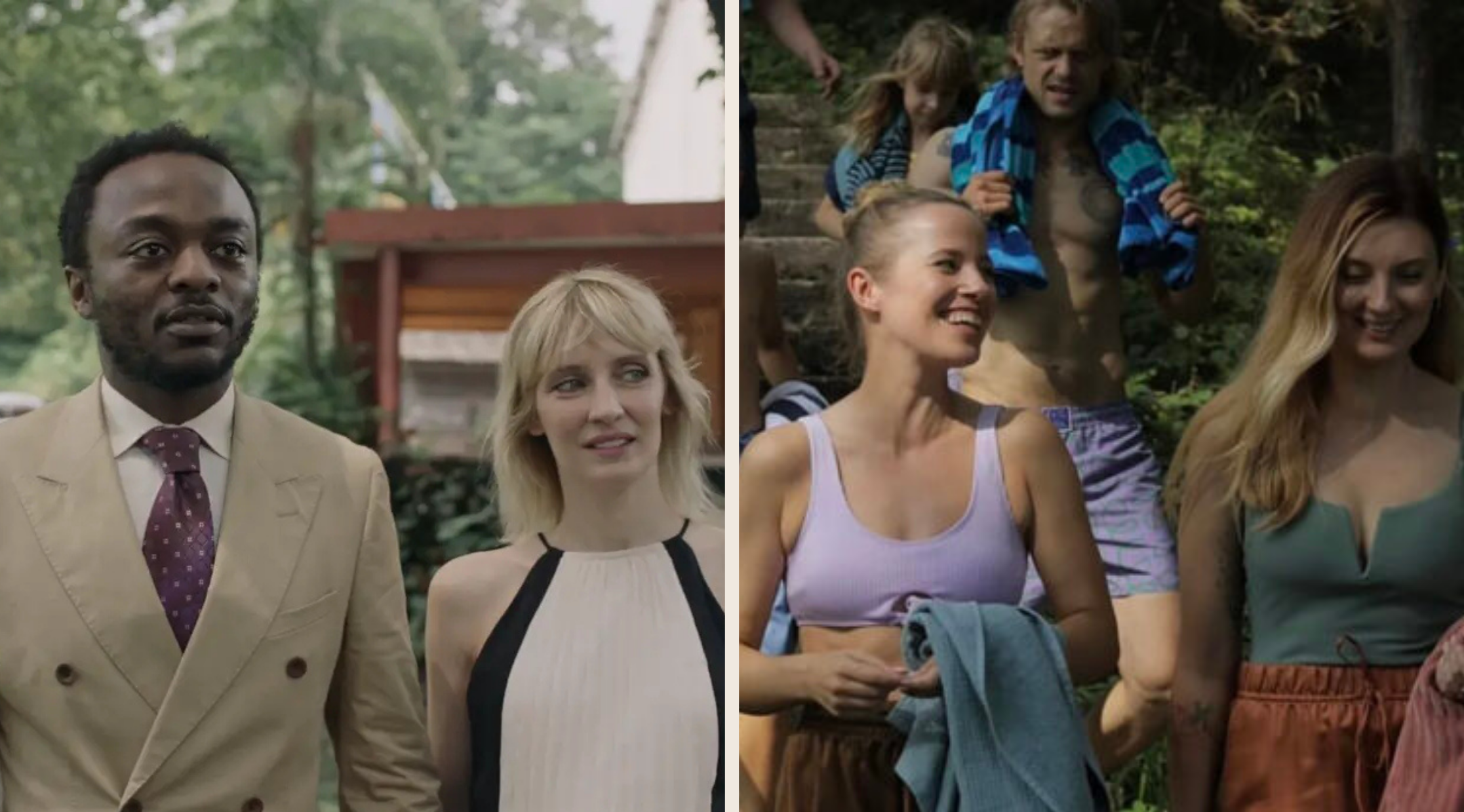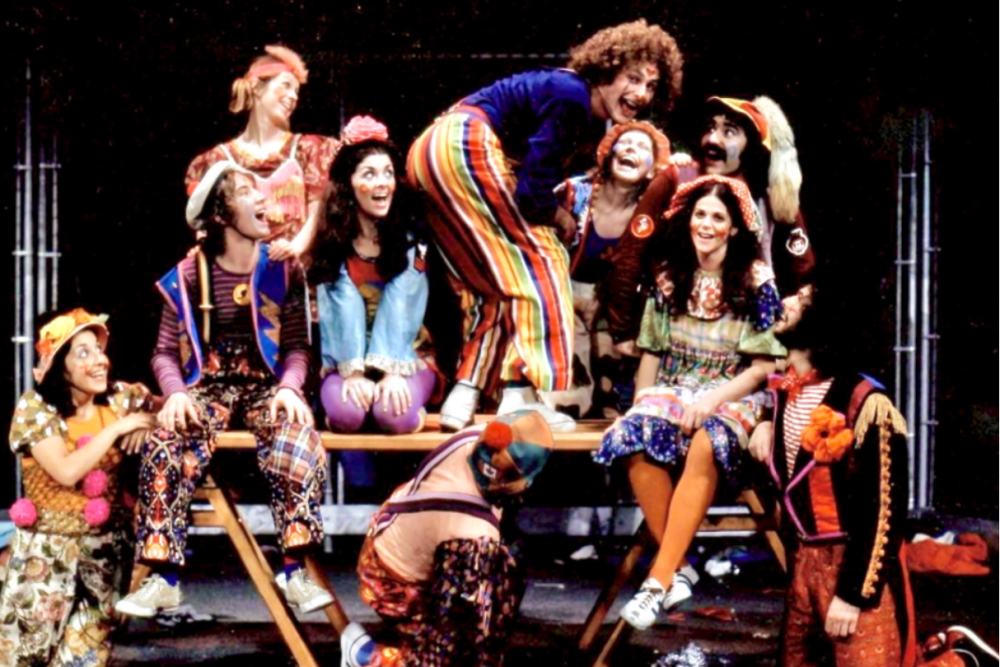Film reviews: At KDocsFF, fuel for discussion in documentaries that look at body biases, homeless encampments, and farm protests
Your Fat Friend pleads for solidarity, not empathy; Someone Lives Here’s tiny-shelter approach to homelessness; Rails, Jails & Trolleys’ look at the world’s largest protest
Your Fat Friend
Someone Lives Here
KDocsFF runs at Vancity Theatre from February 21 to 25
YOUR FAT FRIEND
February 21, 3:30 pm, with a panel including Layla Cameron, lecturer, School of Communication, SFU and lecturer, Department of Gender, Women and Sexuality Studies, UBC Okanagan
“Just say fat,” pleads blogger-activist-bestselling-author Aubrey Gordon. “Not curvy or chubby or chunky or fluffy or more to love or big guy or full-figured or big-boned or queen-size or husky or obese or overweight.” Your Fat Friend, a documentary dedicated to the Portland, Oregon-based writer’s story, is one of those paradigm-shifting films that makes you see the world from a new angle—in this case, that it’s not only openly prejudiced against but literally built against the plus-sized (and yes, Gordon would hate that term too). Just walking onto a bus or airplane makes her “blood run cold”, Gordon tells us here in many unflinchingly honest accounts. On one level, the film documents her rise from anonymous blogger (known as “Your Fat Friend”) with fast-multiplying social-media followers. (Some overflow with gratitude that someone is finally taking a stand against “anti-fatness”, while too many others level pure hate toward her.) From there she journeys to public speaker and author. On an even more compelling level, it looks intimately at the pain of her past, and her sometimes deeply uncomfortable conversations with friends and family; some of the most moving, and relatable, centre around the uncountable damaging diets she was put through by doctors, and her own diet-conscious mother. (A cringe-inducing teen Weight Watchers camp was apparently a thing.) Considerably more empowered today, Gordon at one point gives us a tour of her absurd vintage diet-book collection—one that would be hilarious if it weren’t so terrifying. She is equally skeptical of the motivations behind the more recent “wellness” movement. The open and generous Gordon gives space for people to shift their perspective on fatness—especially her own parents, who we witness learn in real time over this multiyear project. As the film’s sharp and likable subject says in another blunt plea: “less empathy and more solidarity”. •JS
SOMEONE LIVES HERE
February 24, 3:30 pm, VIFF Centre, with a panel including film subject Khaleel Seivwright and Alexandra Flynn, associate Professor, Peter A. Allard School of Law and Director, Housing Research Collaborative, UBC
“SOMEONE LIVES HERE – DO NOT REMOVE”, reads a sign in bright lettering that’s been placed on a tiny wooden shelter in Toronto’s Alexandra Park. The temporary home, no bigger than a dumpster, was built by carpenter Khaleel Seivwright. It’s got insulation, a damp-proof vapour barrier, a carbon monoxide detector, a lock, and most importantly, privacy—a huge leg up from many of Toronto’s homeless shelters and tent cities. In director Zack Russell’s feature documentary Someone Lives Here, we learn that Seivwright has begun erecting dozens of the structures throughout the city of his own volition to help with the housing crisis; that he himself lived in a tent for five months during the winter in Vancouver; and that he doesn’t consider himself an activist. Empathy and diversity of perspective are at the forefront of the film. There’s continual narration from 58-year-old tiny shelter resident Taka—she tells of seeking out assisted suicide and sleeping on a bench in a snowstorm, all with Slavic-accented spunk and wry humour. We witness the City of Toronto’s disjointed bureaucracy in action, as one department offers to partner up with Seivwright one afternoon, then another sends him a cease-and-desist letter the next. Elsewhere, we see a tracking shot of Alexandra Park that reveals a sprawl of tents with cobalt-blue, bright-orange, and army-green tarps in the foreground; in the background is an empty playground. Despite an ending to the documentary that leaves something to be desired (a solution where there is no clear one, perhaps), we’re left with a bit of faith that there are still folks out there who are doing good in the world. Says Seivwright of building the shelters: “It’s simply something that I saw that I could do that made sense. And so I did it.” •EL
RAILS, JAILS & TROLLEYS
At Vancity Theatre on February 22 at 3:30 pm, with a panel including director Henna Mann and film subject Mo Dhaliwal
The world’s largest peaceful protest ended in November 2021 with the repeal of three bills in Indian Parliament that would have decimated agriculture in the Punjab. For a year, a staggering 250 million-plus citizens took a stand against the Modi government, blocking highways and camping on the border of Delhi. Meanwhile, the 2020-21 Indian Farmers Protest won the interest of global media and the support of public figures as disparate as Rihanna and Greta Thunberg. Agriculture provides work to over 60 percent of the population in the region, and Henna Mann’s Vancouver-made doc provides an intensive course on the miracles and the failures of the sector in the decades following the Bengal Famine in 1943. Globalism and the new century’s Agrarian Crisis brought things to the point of collapse, along with an epidemic of farmer suicides, and Modi’s bid for further deregulation was like a gun pointed at the country. The existential payload of the situation was impeccably captured in a catchphrase that should haunt the citizens of any country now at the mercy of neoliberal corporate capitalism: “No Farms, No Food”. Rail, Jails & Trolleys is so information-dense that it probably deserves multiple viewings, although it concludes, in any case, as a stirring example of low-budget agitprop. Mann relies on a number of journalists, pundits, and activists who are all very articulate in their critique of “the intersection of capitalism and the nation state”, as the Tyee’s Bal Dhillon puts it, not to mention their crystal-clear view of the covert efforts of the Modi government to smear, discredit, and distract from the farmers’ cause, with the predictable and baseless charges of “terrorism” hurled at a genuine people’s uprising. If the same thing should ever happen here—as it is happening currently across Europe—and if that movement inevitably triggered similarly false allegations, distributed through official channels, one hopes their vision would be just as acute. •AM
THE PRICE OF TRUTH
At Vancity Theatre on February 24
Patrick Forbes’s doc begins with the awarding of a Nobel Peace Prize in 2021 to Dmitry Muratov, Russian journalist and editor of the independent newspaper, Novaya Gazeta. The late muckraker John Pilger responded to the occasion by labeling Nobel “an instrument of Western propaganda”, which is worth mentioning because The Price of Truth is explicitly about censorship and propaganda. It’s a vital film, though not immune to criticism, covering the demise of Novaya Gazeta following the invasion of Ukraine. Founded with the help of Mikhail Gorbachev in 1993 (using his Nobel prize money), Novaya Gazeta has done some good work, particularly around the Chechen wars. Contributors face real risk, some have been murdered, and Muratov himself was permanently wounded by Russian security thugs over his opposition to the war—an episode covered in the film’s prologue. The Price of Truth follows the bear-like editor around the world as he presides over the paper’s collapse, first relocating to Latvia and then having its license revoked by an increasingly intolerant official communications agency. Given Muratov’s compulsive opposition to his government and his elevation by Western powers, the fate of the Novaya Gazeta is hardly unexpected, but it’s hard to argue the broad message: there should be no state crackdown on journalists, in Russia or anywhere else (the film ends with a long and sorry list of Moscow-deemed “foreign agents” and jailed reporters), and on critical public matters like Ukraine, Novaya Gazeta deserves the right to publish whatever it wants. Equally, in an honest reading of The Price of Truth, we might also consider how we treat our own dissident journalists and the methods, different but no less effective, in which we shape Western political consensus. •AM
















